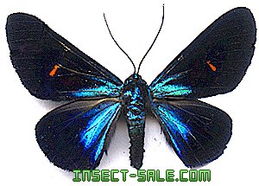
Understanding Insect Bites and Allergies

Insect bites can be a common occurrence, especially during the warmer months when we spend more time outdoors. While most bites are harmless and will heal on their own, some individuals may experience severe allergic reactions. To alleviate the discomfort and reduce the risk of complications, choosing the right antihistamine is crucial. This article will delve into the best antihistamines for insect bites, considering their effectiveness, side effects, and user experiences.
Types of Antihistamines

Antihistamines are medications that help alleviate the symptoms of allergies, including insect bites. There are two main types of antihistamines: first-generation and second-generation. First-generation antihistamines, such as diphenhydramine (Benadryl) and hydroxyzine (Atarax), are known for their sedative effects. Second-generation antihistamines, such as cetirizine (Zyrtec) and loratadine (Claritin), are less likely to cause drowsiness and are often preferred for their daytime use.
Effectiveness of Antihistamines for Insect Bites

When it comes to treating insect bites, antihistamines can help reduce itching, swelling, and redness. However, their effectiveness may vary depending on the severity of the bite and the individual’s allergic response. Here’s a breakdown of the effectiveness of different antihistamines:
| Antihistamine | Effectiveness for Insect Bites | Side Effects |
|---|---|---|
| Diphenhydramine (Benadryl) | High | Sedation, dry mouth, dizziness |
| Hydroxyzine (Atarax) | High | Sedation, dry mouth, dizziness |
| Cetirizine (Zyrtec) | High | Headache, dry mouth, drowsiness (rare) |
| Loratadine (Claritin) | High | Headache, dry mouth, drowsiness (rare) |
User Experiences and Recommendations
User experiences with antihistamines for insect bites can vary. Many individuals find that second-generation antihistamines, such as cetirizine and loratadine, are more effective and have fewer side effects compared to first-generation antihistamines. However, it’s essential to consider your personal preferences and consult with a healthcare professional before making a decision.
Here are some user recommendations:
- Cetirizine (Zyrtec) is often praised for its effectiveness and minimal side effects.
- Loratadine (Claritin) is another popular choice, especially for those who prefer a non-sedating option.
- Some users have found that a combination of antihistamines and topical treatments, such as hydrocortisone cream, provides the best relief.
When to Seek Medical Attention
While antihistamines can help alleviate the symptoms of insect bites, it’s essential to know when to seek medical attention. If you experience any of the following symptoms, it’s crucial to consult a healthcare professional:
- Severe swelling or redness
- Difficulty breathing or swallowing
- Severe pain or discomfort
- Feeling faint or dizzy
- Any signs of infection, such as increased redness, warmth, or pus
Conclusion
Choosing the best antihistamine for insect bites depends on various factors, including the severity of the bite, individual preferences, and potential side effects. Second-generation antihistamines, such as cetirizine and loratadine, are often recommended for their effectiveness and minimal side effects. However, it’s essential to consult with a healthcare professional to determine the most suitable treatment for your specific needs.





